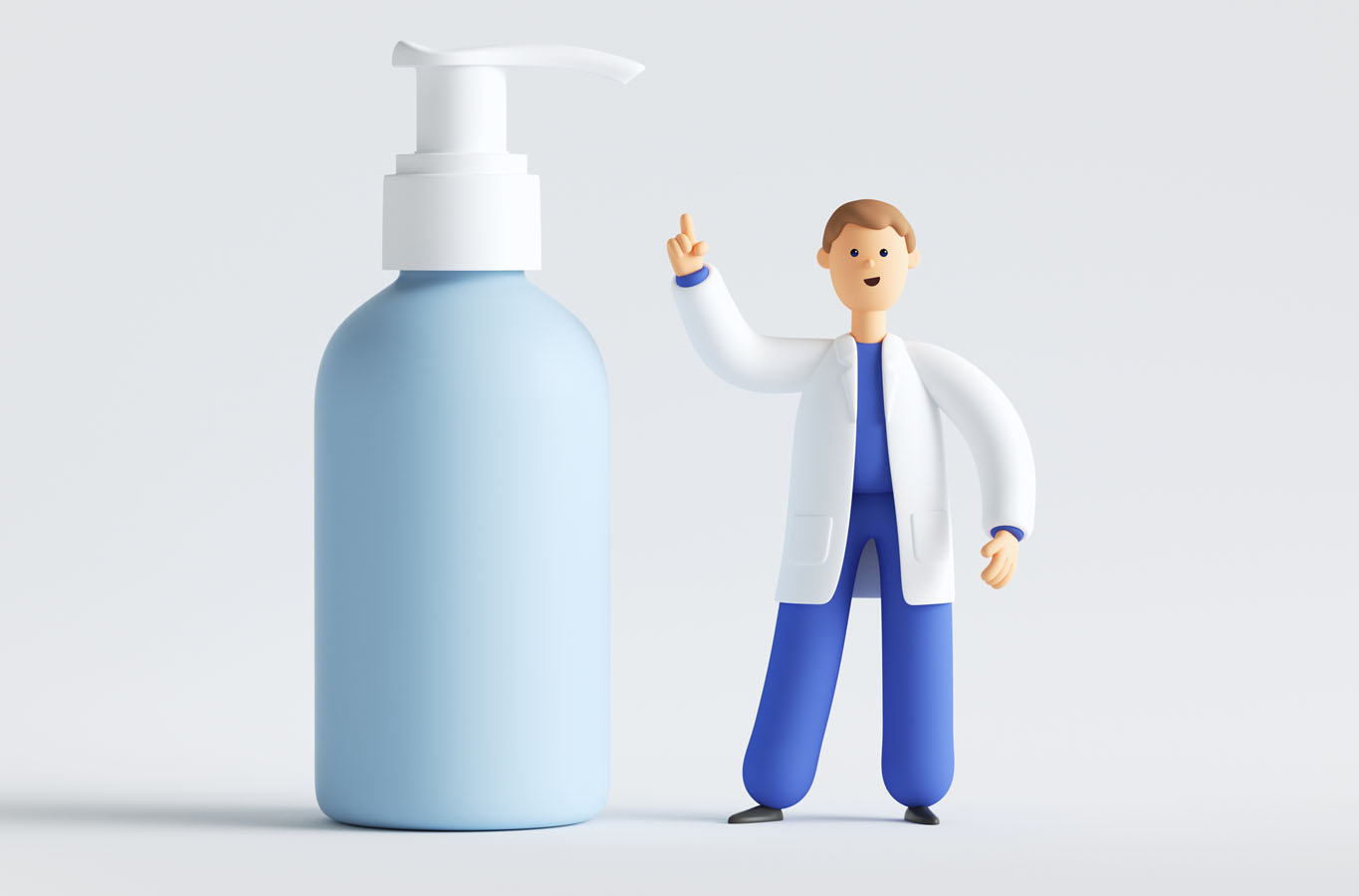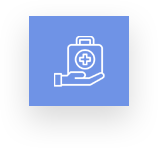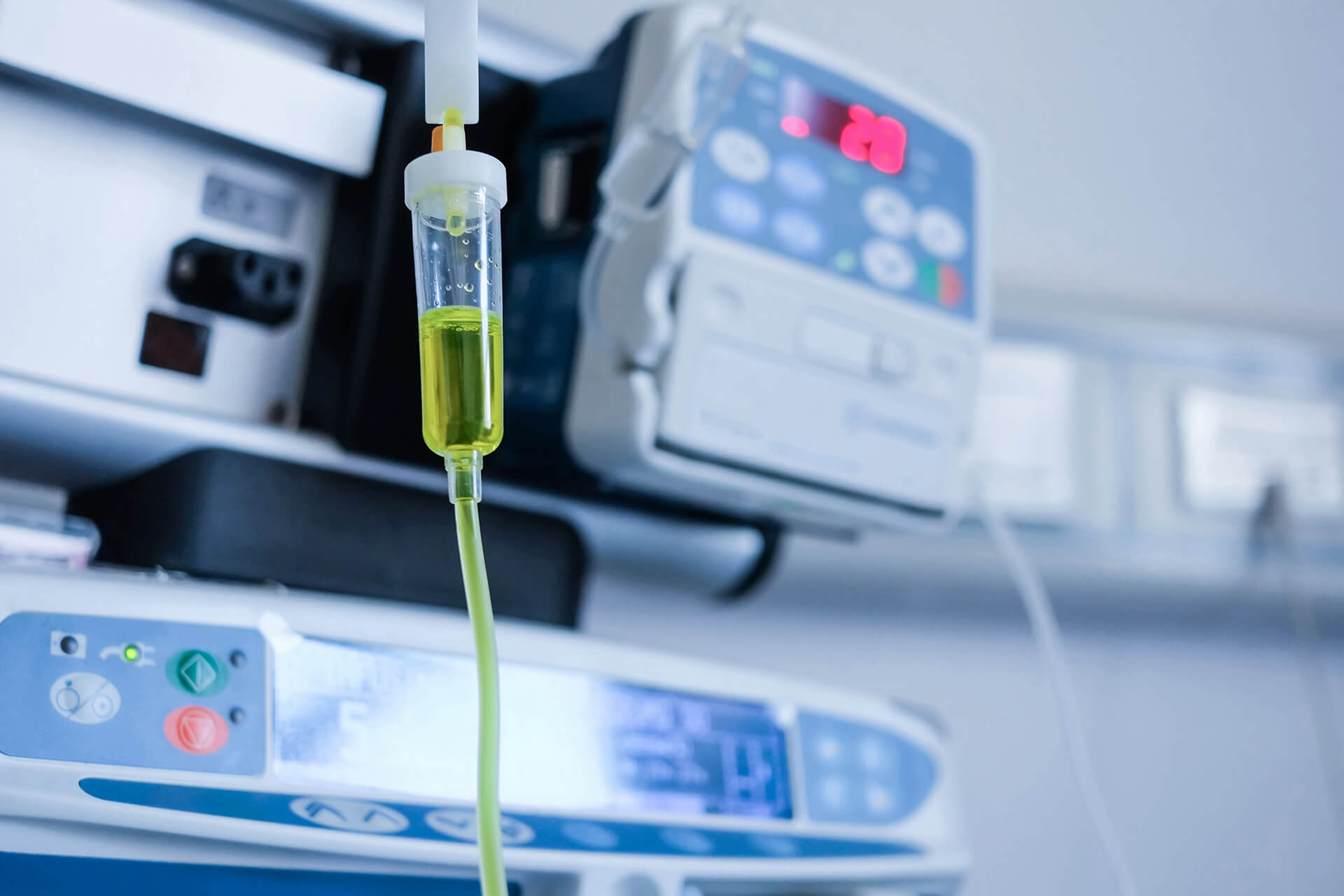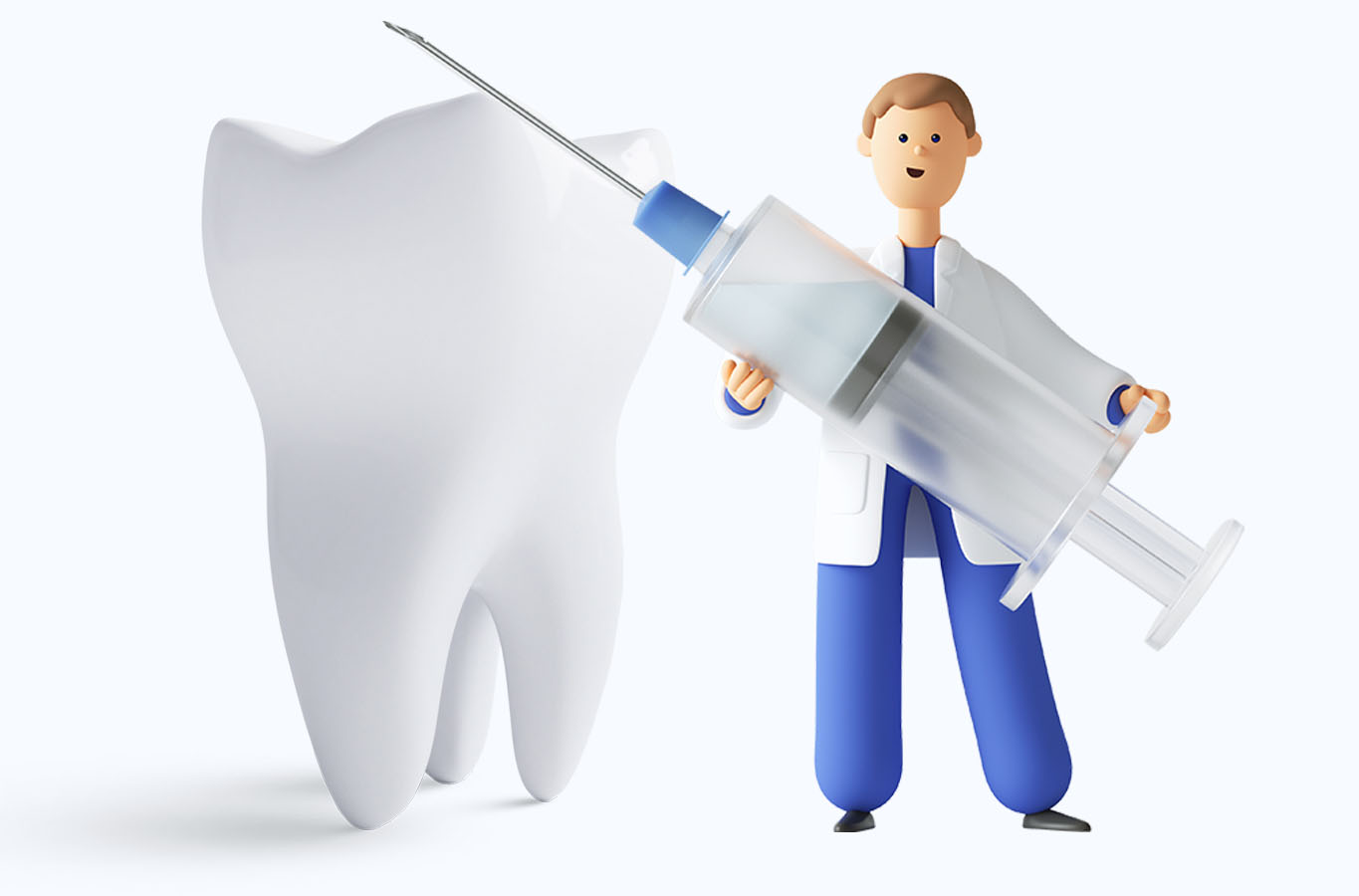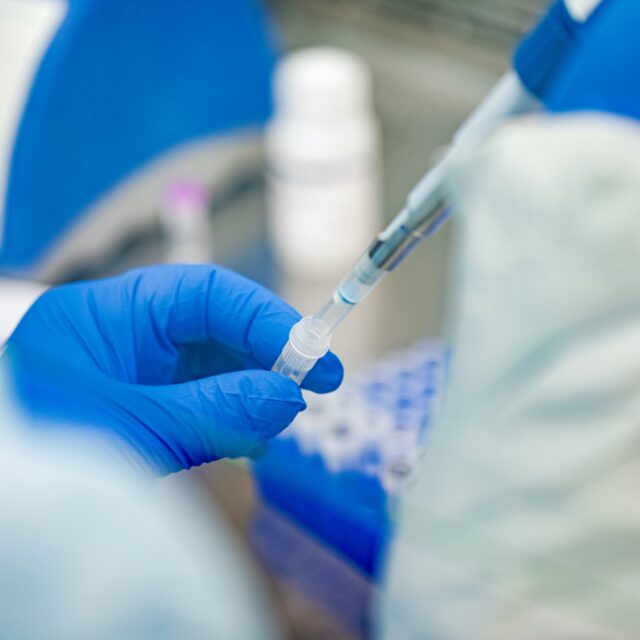
What is COVID-19? Symptoms of COVID-19
COVID-19 (coronavirus disease 2019) is a disease caused by a virus named SARS-CoV-2. It can be very contagious and spreads quickly. Over one million people have died from COVID-19 in the United States. COVID-19 most often causes respiratory symptoms that can feel much like a cold, the flu, or pneumonia. COVID-19 may attack more than your lungs and respiratory system. Other parts of your body may also be affected by the disease. Most people with COVID-19 have mild symptoms, but some people become severely ill. Some people including those with minor or no symptoms will develop Post-COVID Conditions – also called “Long COVID.” People with COVID-19 have reported a wide range of symptoms ranging from mild symptoms to severe illness. Symptoms may appear 2-14 days after exposure to the virus. Anyone can have mild to severe symptoms. Possible symptoms include:
- Fever or chills
- Cough
- Shortness of breath or difficulty breathing
- Fatigue Muscle
- Body aches
- Headache
- New loss of taste or smell
- Sore throat
- Congestion or runny nose
- Nausea or vomiting
- Diarrhea
- This list does not include all possible symptoms. Symptoms may change with new COVID-19 variants and can vary by person. CDC will continue to update this list as we learn more about COVID-19.
Key Times for Prevention
CDC’s Respiratory Virus Guidance provides strategies you can use to help protect yourself and others from health risks caused by COVID-19 and other respiratory viruses. These actions can help you lower the risk of COVID-19 transmission (spreading or catching COVID-19) and lower the risk of severe illness if you get sick. Core Prevention Strategies placeholder-image CDC recommends that all people use core prevention strategies to protect themselves and others from COVID-19: Stay up to date with COVID-19 vaccines. Although vaccinated people sometimes get infected with the virus that causes COVID-19, staying up to date on COVID-19 vaccines significantly lowers the risk of getting very sick, being hospitalized, or dying from COVID-19. Practice good hygiene (practices that improve cleanliness) Take steps for cleaner air When you are sick: Use precautions to prevent spread, including staying home and away from others (including people you live with who are not sick) if you have respiratory symptoms. Learn when you can go back to your normal activities. Seek health care promptly for testing and/or treatment if you have risk factors for severe illness. Treatment may help lower your risk of severe illness, but it needs to be started within a few days of when your symptoms begin. Additional Prevention Strategies In addition, there are other prevention strategies that you can choose to further protect yourself and others. Wearing a mask and putting distance between yourself and others can help lower the risk of COVID-19 transmission. Testing for COVID-19 can help you decide what to do next, like getting treatment to reduce your risk of severe illness and taking steps to lower your chances of spreading COVID-19 to others. Using these prevention strategies can be especially helpful when: Respiratory viruses, such as COVID-19, flu, and RSV, are causing a lot of illness in your community You or those around you have risk factors for severe illness You or those around you were recently exposed to a respiratory virus, are sick, or are recovering
COVID-19 Treatment and Preventive Medication
Most people with COVID-19 have mild illness and can recover at home. You can treat symptoms with over-the-counter medicines, such as acetaminophen or ibuprofen, to help feel better. If you have COVID-19 and are more likely to get very sick from COVID-19, treatments are available that can reduce your chances of being hospitalized or dying from the disease. Medications to treat COVID-19 must be prescribed by a healthcare provider or pharmacist and started within 5–7 days after symptoms appear. Contact a healthcare provider right away to determine if you are eligible for treatment, even if your symptoms are currently mild. Don’t delay: Treatment must be started within 5–7 days of when you first develop symptoms. People who are more likely to get very sick include: Older adults (especially those ages 65 years or older, with risk further increasing with advancing age), People who are unvaccinated or are not up to date on their COVID-19 vaccinations, People with certain medical conditions, such as chronic lung disease, heart disease, or a weakened immune system. Staying up to date with your COVID-19 vaccinations makes you much less likely to get very ill, be hospitalized, or even die from COVID-19. Treatments can further reduce the risk for COVID-19 hospitalization and death among vaccinated people, especially those at higher risk for severe illness. A healthcare provider will help decide whether treatment is right for you. Check with your healthcare provider or pharmacist if you are taking other medications to make sure the COVID-19 treatments can be safely taken at the same time. Treatments patient receiving treatment pamphlet from healthcare provider FDA has authorized or approved several antiviral medications used to treat mild to moderate COVID-19 in people who are more likely to get very sick. Antiviral treatments for COVID-19 target specific parts of the virus to stop it from multiplying in the body once someone is infected, helping to prevent severe illness and death. The Infectious Diseases Society of America provides Guidelines on the Treatment and Management of Patients with COVID-19 for healthcare providers to help them work with their patients and determine the best treatment options for them. Some treatments might have side effects or interact with other medications you are taking. If you don’t have a healthcare provider, visit a Test to Treat location or contact your local community health center or health department. If you are hospitalized, your healthcare provider might use other types of treatments, depending on how sick you are. These could include medications to better recognize and respond to the virus, treat the infection, reduce an overactive immune response, or treat COVID-19 complications. If you have a weakened immune system, have received antiviral treatment, and continue to experience COVID-19 symptoms, your healthcare provider may recommend additional treatment, including convalescent plasma.
Preventing COVID-19
COVID-19 vaccines COVID-19 vaccines available in the United States effectively protect people from getting seriously ill, being hospitalized, and even dying. As with vaccines for other diseases, you are protected best when you stay up to date. People who are moderately or severely immunocompromised may get additional doses of updated COVID-19 vaccines. People aged 65 and older should receive 1 additional dose of an updated COVID-19 vaccine. CDC recommends that everyone who is eligible stay up to date on their COVID-19 vaccines. Pre-exposure Prophylaxis (Medication for Preventing COVID-19) FDA has authorized a preventive monoclonal antibody for people who are moderately or severely immunocompromised, ages 12 years and older, and weighing at least 88 pounds. In addition to vaccination, Pemivibart (Pemgarda™) may provide another layer of protection against COVID-19 and can be given at least 2 weeks after receiving a COVID-19 vaccine. A healthcare provider gives Pemgarda as a single intravenous infusion over 60 minutes at a doctor’s office or healthcare facility. If continued protection is needed, additional doses should be administered every 3 months. People who are privately insured or have Medicare part B may receive Pemgarda for free. Talk to your healthcare provider to see if Pemgarda is right for you. To find COVID-19 vaccine locations near you: Search vaccines.gov, text your ZIP code to 438829, or call 1-800-232-0233.
COVID-19 Testing: What You Need to Know
COVID-19 testing can help you know if you have COVID-19 so you can decide what to do next, like getting treatment to reduce your risk of severe illness and taking steps to lower your chances of spreading the virus to others. When you get tested: Choose the right type of test for your circumstance For antigen tests, follow test directions as recommended by FDA and the test manufacturer If you do not, your results may be less likely to correctly indicate whether you have COVID-19 or not.
Types of Tests
Viral tests look for a current infection with SARS-CoV-2, the virus that causes COVID-19, by testing specimens from your nose or mouth. There are two main types of viral tests: Polymerase chain reaction (PCR) tests Antigen tests
PCR Tests
PCR tests are the “gold standard” for COVID-19 tests. They are a type of nucleic acid amplification test (NAAT), which are more likely to detect the virus than antigen tests. Your sample will usually be taken by a healthcare provider and transported to a laboratory for testing. It may take up to 3 days to receive results.
Antigen Tests
Antigen tests* are rapid tests that usually produce results in 15-30 minutes. Positive results are accurate and reliable. However, in general, antigen tests are less likely to detect the virus than PCR tests, especially when symptoms are not present. Therefore, a single negative antigen test cannot rule out infection. To be confident you do not have COVID-19, FDA recommends 2 negative antigen tests for individuals with symptoms or 3 antigen tests for those without symptoms, performed 48 hours apart. A single PCR test can be used to confirm an antigen test result. *Self-tests, or at-home tests, are antigen tests that can be taken anywhere without having to go to a specific testing site. Read self-test package inserts thoroughly and follow the instructions closely when performing the test.
Interpreting Your Results
If Your COVID-19 Test Is Positive A positive COVID-19 test means the virus was detected and you have or recently had an infection. Take steps to prevent spreading COVID-19. Monitor your symptoms. If you have any emergency warning signs, seek emergency care immediately. Seek health care right away for treatment if you have risk factors for severe illness. Treatment may be an option to make your symptoms less severe and shorten the time you are sick. Treatment needs to be started within a few days of when your symptoms begin. If Your COVID-19 Test Is Negative A negative COVID-19 test means the test did not detect the virus, but this doesn’t rule out that you could have an infection. If you used an antigen test, follow FDA recommendations for repeat testing. If you have symptoms: You may have COVID-19 but tested before the virus was detectable. You may have another viral infection or illness. Take actions to help protect yourself and others from health risks caused by respiratory viruses. Contact a healthcare provider if you have any questions about your test result.


